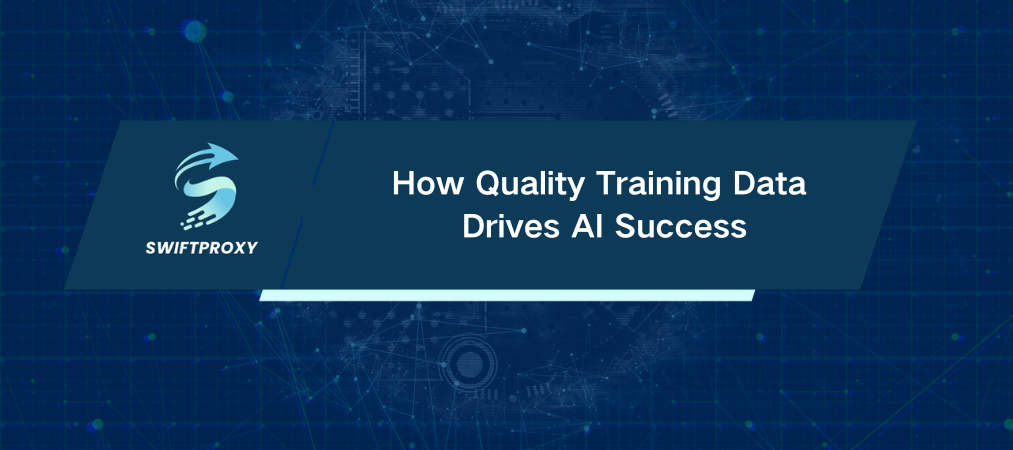How Quality Training Data Drives AI Success

The saying "garbage in, garbage out" has never been more relevant than in AI development. Regardless of how advanced your algorithms become, the quality of your training data is crucial—it can make or break your model. If you compromise on data quality, you are greatly reducing your chances of success.
Let's cut through the noise and get straight to the core. The question is how to use training data to build AI that is sharp, reliable, and fair. This guide breaks it down so you can walk away with clear steps and deep insights.
Introduction to AI Training Data
Think of training data as the fuel powering your AI engine. Machine learning models learn by example — lots of examples.
Your model is basically a formula:
Algorithm (a) + Data (b) = Outcome
Change the data, and the result changes. That's why picking the right data is critical.
Want an AI that can draw cats? Feed it thousands of labeled cat pictures. The model learns features — ears, tails, whiskers — and eventually generates new cat images all on its own.
Types of Training Data
Labeled Data: Tagged and sorted by humans, this data comes with context — like an image tagged "cat." Essential for supervised learning, where the model learns to make precise predictions based on clear guidance.
Unlabeled Data: Raw and untagged, it's perfect for unsupervised learning. The AI digs for hidden patterns or anomalies on its own, useful for detecting fraud or segmenting customers without predefined categories.
If you want accurate classification or prediction, invest time in high-quality labeling. It's a tedious process but absolutely worth it.
Formats of Training Data
Training data isn't one-size-fits-all. It comes in many flavors:
Text: Articles, emails, social media posts. Great for language models and sentiment analysis.
Audio: Speech, music, or environmental sounds — perfect for voice recognition and emotion detection.
Image: Photos and graphics used for facial recognition, medical imaging, or quality control.
Video: Combines moving images and sound for advanced computer vision tasks, like surveillance or autonomous driving.
Sensor Data: From IoT devices — think temperature, motion, or biometric info — powering smart homes and wearables.
Remember that structured data fits neatly in tables. Unstructured data, on the other hand, is messy and includes things like videos and audio files. Managing unstructured data requires more sophisticated tools but also opens up richer AI possibilities.
How Training Data Powers Model Development
Collect: Find the right, diverse data sets. Bigger isn't always better — relevance matters most.
Annotate & Clean: Label your data carefully and clean out errors or inconsistencies. Dirty data leads to dirty results.
Train: Feed data into your model using supervised or unsupervised learning depending on your goal.
Validate: Test performance on fresh data. Look at accuracy, precision, recall — don't just trust raw output.
Test & Iterate: Real-world data can break your model. Keep refining and retraining to adapt to new challenges.
Why Quality Training Data Matters More Than Quantity
A ton of data is useless if it's messy or biased. Quality affects:
Accuracy: Clean, relevant data means your AI makes better predictions.
Generalization: Your model should handle new data — not just memorize the old. Avoid overfitting or underfitting by mixing diverse examples.
Fairness: Biased data creates biased AI. Diversity in datasets and transparency in development guard against unfair outcomes.
Watch Out for Data Pitfalls
Bias: It sneaks in through unrepresentative samples or flawed labeling. Fix this with diverse teams and regular audits.
Overfitting: Too much repetition means your model fails on new data. Vary your dataset.
Imbalanced Data: If one category dominates, your AI ignores the rest. Balance is key.
Noisy Labels: Incorrect tags confuse your model. Use domain expertise and data visualization tools to spot and fix errors.
Where to Get Your Training Data
Internal Data: Use what you already have — customer interactions, support tickets, behavior logs. Spotify, for example, uses your playlists to fine-tune recommendations.
Open Datasets: ImageNet, Common Crawl, Kaggle — treasure troves of free, vetted data.
Data Marketplaces: Purchase specialized datasets from vendors or analytics firms.
Web Scraping: Extract data from websites — great for price comparisons, reviews, or competitor insights.
Synthetic Data: Artificially created data to fill gaps or speed up training. It's cheaper and quicker but usually less nuanced than real data.
Check licensing, copyrights, and privacy regulations like GDPR and CCPA. Compliance isn't optional.
Best Practices for Managing Training Data
Clean and normalize data regularly — remove duplicates and fix errors.
Use annotation tools and quality control to keep labeling consistent.
Cultivate dataset diversity to reduce bias.
Validate completeness and consistency across sources.
Implement version control and monitor datasets for changes or anomalies.
Final Thought
AI's power isn't just in smart algorithms — it's in the quality of the data behind them. Invest in your training data. Get it right, and your AI becomes smarter, fairer, and more reliable. Ignore it, and you're just guessing.

















































